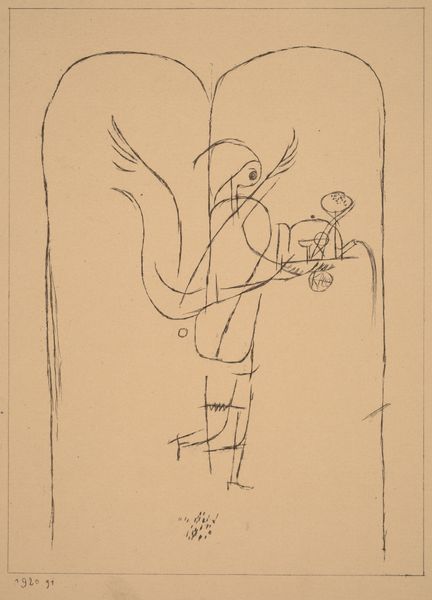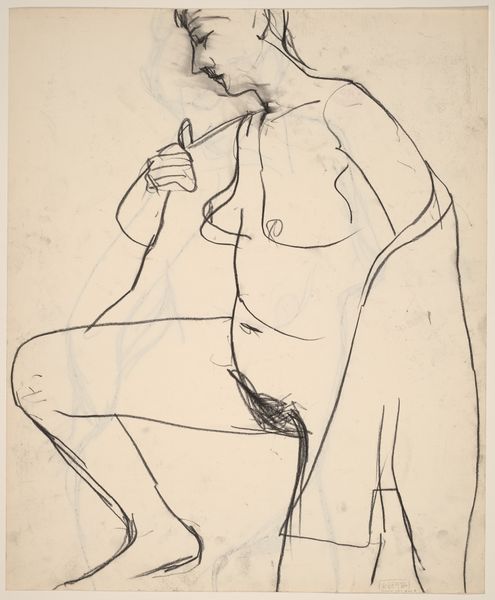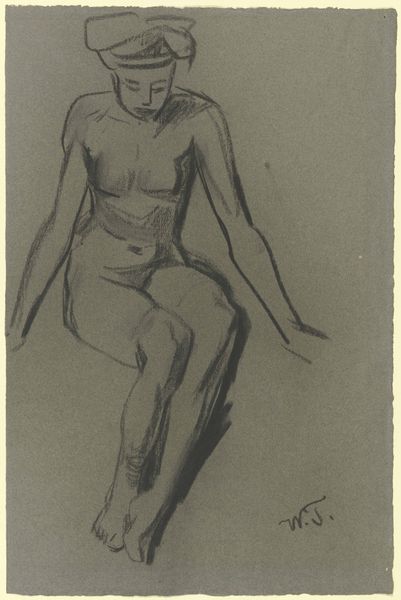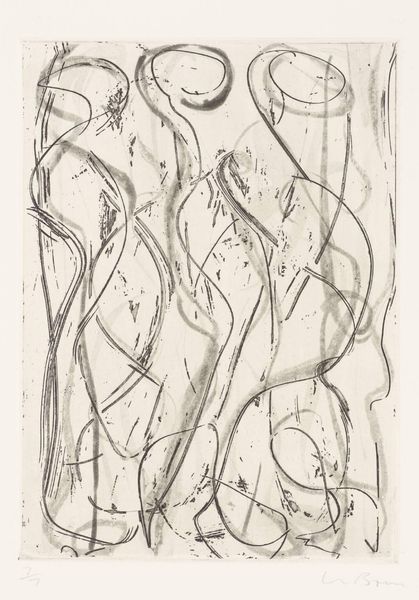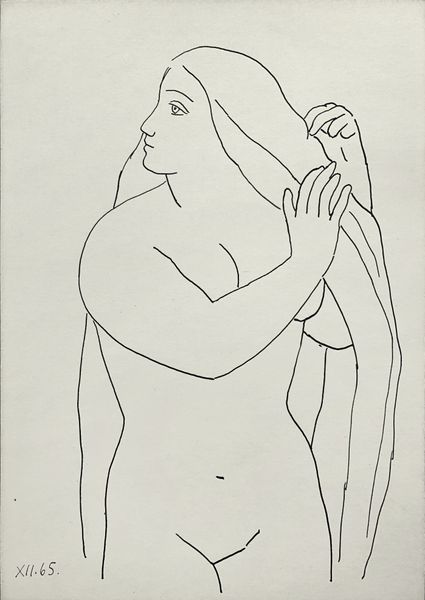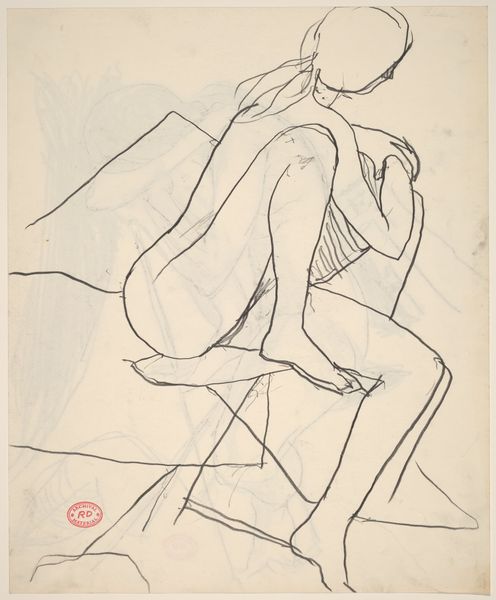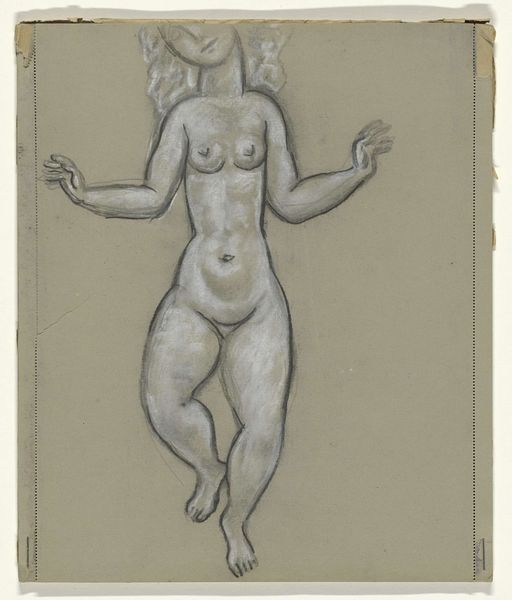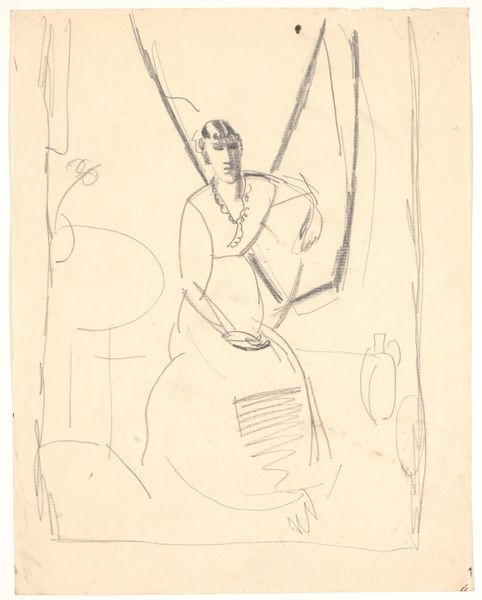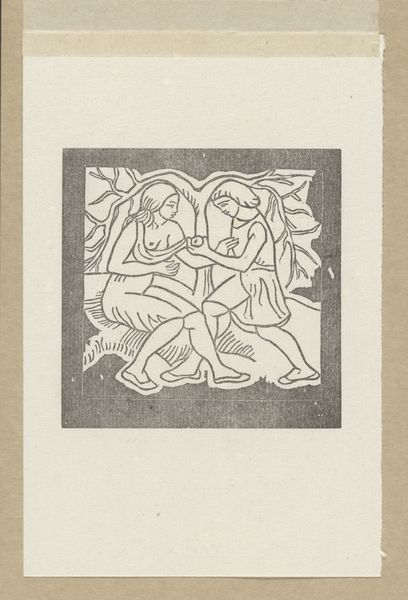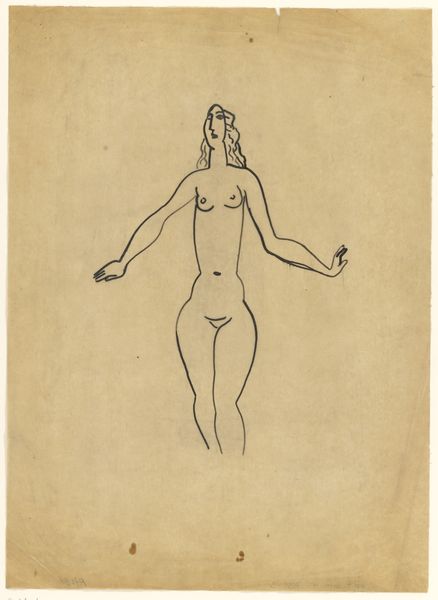
drawing, ink, pen
#
portrait
#
drawing
#
pen sketch
#
figuration
#
ink
#
pen
Copyright: Public Domain: Artvee
Curator: Welcome. We are here today to discuss Juan Gris' 1925 pen and ink drawing "Femme à l’éventail," or "Woman with a Fan." Editor: It strikes me immediately as poised yet unfinished. The subject is rendered in these elegant lines, a confident contour drawing, and the pose is almost classical, but it feels deliberately incomplete, somehow withholding. Curator: The limited use of line is certainly essential to its impact. Note how Gris relies on suggestion rather than detailed rendering. The subject's garment is defined not by its shape, but by these few lines hinting at folds and volume, offering a study in graceful reduction. Editor: It also has a starkness, wouldn't you say? We have this European woman, maybe upper class given the fan. Then you have what appears to be foliage sketched behind her. This reminds me a bit of the way imperial portraiture positions colonizers near exotic locales. Is the background a reference to French imperialism? Curator: Perhaps, but the geometric approach complicates that simple reading. The plant behind the figure becomes a near-abstract composition of shapes. Consider the way Gris organizes the surface – he juxtaposes the curves of the figure with the straight lines in the background to generate this undeniable dynamism. Editor: I understand that, but in works of the era that feature exoticist details there always seems to be a reinforcement of the other. Gris' reduction can reinforce that hierarchy just as well. Look how the curves emphasize the body versus those jagged background fronds that appear threatening! Curator: An interesting reading. Yet, consider the composition; Gris employs line so masterfully. The sparse background complements, and pushes forward, the form. It doesn't seem that threatening to me. Instead, there seems to be an interest in creating visual balance between subject and surrounding elements, achieved in the composition overall. Editor: True. Even so, placing that woman front and center draws my attention to who it's missing or what it isn't saying. In a minimalist drawing of a woman from 1925, can we ignore race, colonialism, gender, class? Curator: A perspective that broadens the significance of its stark design, and pushes it past the basic reading of pure formalism. Thank you for offering such analysis! Editor: The beauty of art is that it holds so much we all miss something upon our first impressions. A deeper look opens us to it's time.
Comments
No comments
Be the first to comment and join the conversation on the ultimate creative platform.


